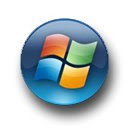 Discovery has always been important to legal proceedings. Poring through papers to find relevant documents was a huge part of what litigation support services offered in the days before computers. Discovery still matters, but ediscovery -- the searching of electronic records -- has a few critical differences from its paper counterpart. Email is used as an example since it is a common target of ediscovery but this could apply to word processor documents, CAD drawings, or any other computer file.
Discovery has always been important to legal proceedings. Poring through papers to find relevant documents was a huge part of what litigation support services offered in the days before computers. Discovery still matters, but ediscovery -- the searching of electronic records -- has a few critical differences from its paper counterpart. Email is used as an example since it is a common target of ediscovery but this could apply to word processor documents, CAD drawings, or any other computer file.Volume of Information
Electronic documents are easy to create, much easier than paper. Communicating by letter involves a formal tone and specific formatting. Even dictating to a secretary takes more effort than typing a few sentences into an email program.
Email is often used not only to replace letters, but also to replace phone calls. Email has the advantage of being convenient to both parties since either can answer when time is available. But email can be much more complicated than a phone call.
You might save a copy of the message in another folder. You might forward it to other people who might in turn forward it to others and so on. Since no paper is generated it becomes easy to CC everyone from the CEO to the janitor. Ediscovery cases usually involve far more information than paper discovery would.
Metadata
Metadata is data about the data. Your email contains more than just the message. The original message shows every recipient including blind CCs. It shows when the message was sent, not just when the author claimed it was sent. It shows the computer it was sent from which could reveal whether it was sent from work or home and might establish or discredit an alibi.
Metadata is sometimes more important in ediscovery than the document itself, akin to dusting a letter for fingerprints to verify who really wrote it. Other types of documents can reveal even more information such as whether the document was changed since its creation. It puts the information in context in an objective fashion.
Computerized Sorting
Despite the fact that ediscovery typically involves a larger volume of information than paper discovery does, it proceeds much faster. The fact that the data is already in electronic format, plus the attachment of metadata, allows all documents to be organized in almost any way imaginable.
Once collected, if a person needs all emails sent in March that mention a certain client by name, they can be pulled up in an instant. This is unlike paper discovery where the documents need to be laboriously sorted by hand and finding all information on a particular subject requires a hand search.
The unique nature of ediscovery has made it a key part of modern litigation. It has led to changes in the Federal Rules of Civil Procedure and has changed the way some cases have been prosecuted.
Article Source: http://EzineArticles.com/






 Windows 7 is looks much better than both windows xp and windows vista, so almost every user of windows wants to get rid of the boring looks of windows xp and vista.
Windows 7 is looks much better than both windows xp and windows vista, so almost every user of windows wants to get rid of the boring looks of windows xp and vista.
 After windows 7 beta has been released windows vista interface looks too boring and bulky, In my opinion in I would say windows 7 is an upgraded version of windows vista with less bug, better look and feel and user acceptability.
After windows 7 beta has been released windows vista interface looks too boring and bulky, In my opinion in I would say windows 7 is an upgraded version of windows vista with less bug, better look and feel and user acceptability.

